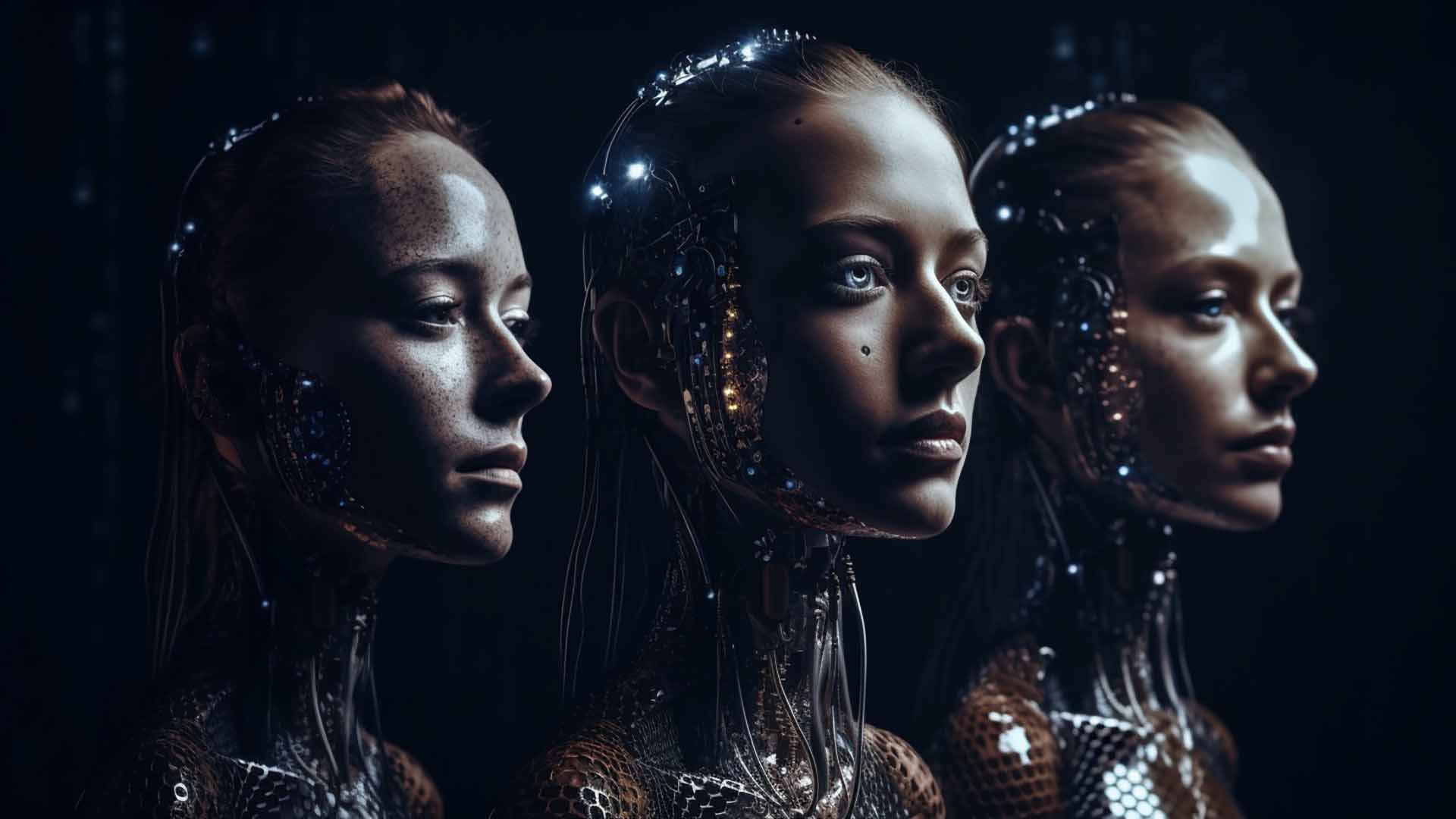The ChatGPT Revolution
Transforming Language Models for a Better Tomorrow
The Evolution of ChatGPT: From GPT-3 to GPT-4 and Beyond
Introduction
The world of artificial intelligence has witnessed astounding advancements in recent years, with language models like ChatGPT taking center stage. As we continue to rely on technology in our daily lives, understanding the development and implications of these AI models is crucial. In this blog post, we will explore the evolution of ChatGPT, from its origins in GPT-3 to its current GPT-4 iteration, and discuss what the future may hold for these revolutionary language models.
I. GPT-3: A Leap Forward in AI Language Models
Key features of GPT-3
GPT-3, or Generative Pre-trained Transformer 3, made waves in the AI community with its groundbreaking architecture, vast training data, and impressive scalability. Its deep learning capabilities enabled it to generate high-quality text, making it a valuable resource for various applications.
Applications of GPT-3
- Text generation: GPT-3's ability to generate contextually relevant and coherent text made it a popular choice for content creators, marketers, and developers.
- Conversational AI: As a powerful language model, GPT-3 played a significant role in the development of chatbots and virtual assistants, offering increasingly human-like conversation experiences.
- Language translation: GPT-3's vast language understanding allowed it to translate text efficiently, bridging the gap between different languages.
- Content summarization: GPT-3 helped in the summarization of long-form content, making information more accessible and digestible for users.
Limitations of GPT-3
Despite its groundbreaking features, GPT-3 faced several challenges:
- Ethical concerns: The potential misuse of GPT-3's text generation capabilities raised questions about its ethical applications.
- Bias in AI-generated content: GPT-3 inherited biases from its training data, which sometimes led to controversial or inappropriate content.
- Computational resources: The large size of GPT-3's architecture required significant computational power, limiting its accessibility.
- Ambiguity and inconsistency: GPT-3 sometimes generated ambiguous or inconsistent responses, making it less reliable for certain tasks.
II. GPT-4: The Next Generation of Language Models
Key improvements from GPT-3 to GPT-4
GPT-4 introduced several enhancements over its predecessor, addressing some of the challenges faced by GPT-3:
- Enhanced model architecture: GPT-4's architecture was refined to improve performance and generate more accurate text.
- More diverse and larger training dataset: GPT-4 used an expanded and diverse dataset to reduce bias and improve content generation.
- Reduced computational requirements: Optimizations in GPT-4's architecture made it more efficient, lowering the computational resources needed.
Applications of GPT-4
- Advanced conversational AI: GPT-4's improvements allowed for the development of more sophisticated chatbots and virtual assistants.
- AI-assisted content creation: GPT-4 made it easier for creators to generate high-quality content, streamlining the content creation process.
- Real-time language translation: GPT-4's advanced language understanding facilitated faster and more accurate translations.
- AI-driven research and development: GPT-4's capabilities were harnessed for innovative research and development across various industries.
Overcoming GPT-3's limitations
GPT-4 addressed several limitations of GPT-3:
- Addressing ethical concerns: Measures were implemented to prevent the misuse of GPT-4's text generation capabilities, promoting responsible usage.
- Mitigating bias in AI-generated content: The diverse training data and improved architecture of GPT-4 helped minimize bias in the generated content, leading to more accurate and appropriate results.
- Enhancing scalability and efficiency: GPT-4's architectural optimizations made it more accessible by reducing computational requirements, allowing more users to leverage its capabilities.
III. Future of ChatGPT and GPT Models
Continuous improvements
As AI technology continues to advance, we can expect further refinements in GPT models, including:
- Model architecture optimization: AI researchers will develop more efficient and powerful architectures for GPT models to enhance their performance.
- Expanding training data sources: Diversifying and expanding the training data sources will contribute to more accurate and unbiased AI-generated content.
- Advanced AI research and development: Ongoing research will lead to new AI techniques and methodologies, improving GPT models' capabilities.
New applications and use cases
As GPT models evolve, their potential applications will also expand:
- AI in education: GPT models can revolutionize the way we learn, offering personalized tutoring and content generation for educational purposes.
- AI in healthcare: GPT models can assist in diagnosing and treating patients by analyzing medical records, research papers, and other relevant data.
- AI in entertainment: GPT models can contribute to scriptwriting, dialogue generation, and interactive storytelling, transforming the way we experience entertainment.
Ethical and societal considerations
As GPT models continue to advance, it is crucial to address ethical and societal concerns:
- AI ethics and policies: Developing and implementing guidelines and regulations will ensure the responsible use and development of AI technology.
- Balancing AI innovation with social responsibility: Ensuring that AI advancements benefit society as a whole, rather than widening existing inequalities or causing harm.
- Potential impact on job markets: Preparing for the possible displacement of certain jobs due to AI advancements and providing retraining and support for affected individuals.
IV. Conclusion
The evolution of ChatGPT, from GPT-3 to GPT-4 and beyond, has demonstrated the tremendous potential of AI-driven language models. As these technologies continue to advance, they will reshape various aspects of our lives, from how we communicate to how we learn and work. It is essential to foster responsible AI development and usage, balancing innovation with ethical considerations and social responsibility, to ensure that these advancements benefit us all.
In conclusion, the journey of ChatGPT from GPT-3 to GPT-4 and beyond signifies the remarkable progress in the field of artificial intelligence and language models. These technologies have the power to transform industries and revolutionize the way we interact with the digital world. As we move forward, it is crucial that we embrace the potential of AI while actively addressing ethical concerns, promoting transparency, and ensuring that these advancements are harnessed for the greater good of society. By striking the right balance between innovation and responsibility, we can create a future where AI-driven language models not only enhance our lives but also contribute to a more inclusive, diverse, and connected world.

As GPT models evolve, they offer a glimpse into a future where AI-driven language models enhance our lives and contribute to a more connected world.
Faq
- Q: What are the main differences between GPT-3 and GPT-4?
A: The primary differences between GPT-3 and GPT-4 include an enhanced model architecture, a more diverse and larger training dataset, and reduced computational requirements in GPT-4, which contribute to better performance and more accurate text generation. - Q: How has the application of ChatGPT evolved from GPT-3 to GPT-4?
A: GPT-4 has enabled more advanced applications, including sophisticated chatbots and virtual assistants, AI-assisted content creation, real-time language translation, and AI-driven research and development across various industries. - Q: What are some ethical concerns surrounding ChatGPT and similar language models?
A: Ethical concerns include potential misuse of AI-generated content, biases present in AI-generated content, balancing AI innovation with social responsibility, and the potential impact of AI advancements on job markets. - Q: How does GPT-4 address the limitations and challenges faced by GPT-3?
A: GPT-4 addresses several limitations by implementing measures to prevent misuse, using more diverse training data and an improved architecture to reduce bias, and optimizing its architecture to enhance scalability and efficiency. - Q: What are some potential future applications of GPT models as they continue to evolve?
A: Future applications may include personalized tutoring and content generation in education, AI-assisted diagnosis and treatment in healthcare, and contributions to scriptwriting, dialogue generation, and interactive storytelling in the entertainment industry.
Pros and Cons
Pros:
- Improved text generation and conversation capabilities
- Diverse applications across industries
- Continuous advancements in AI technology
Cons:
- Ethical concerns regarding AI-generated content
- Potential job displacement due to AI advancements
- Balancing innovation with social responsibility
Resources
- "Deep Learning" by Ian Goodfellow, Yoshua Bengio, and Aaron Courville: This comprehensive book provides an introduction to deep learning techniques, including language models like GPT.
- "Artificial Intelligence: A Guide to Intelligent Systems" by Michael Negnevitsky: This book offers an accessible overview of AI systems, including language models, expert systems, and neural networks.
- "Hands-On Machine Learning with Scikit-Learn, Keras, and TensorFlow: Concepts, Tools, and Techniques to Build Intelligent Systems" by Aurélien Géron: This practical guide teaches machine learning and deep learning techniques using popular Python libraries, which can be applied to language models like GPT.
- "AI Ethics" by Mark Coeckelbergh: This book discusses the ethical considerations surrounding AI development and implementation, including issues relevant to language models like ChatGPT.
- "Reinforcement Learning: An Introduction" by Richard S. Sutton and Andrew G. Barto: This book introduces reinforcement learning, a key concept in AI research, which can be applied to improve language models and other AI systems.

